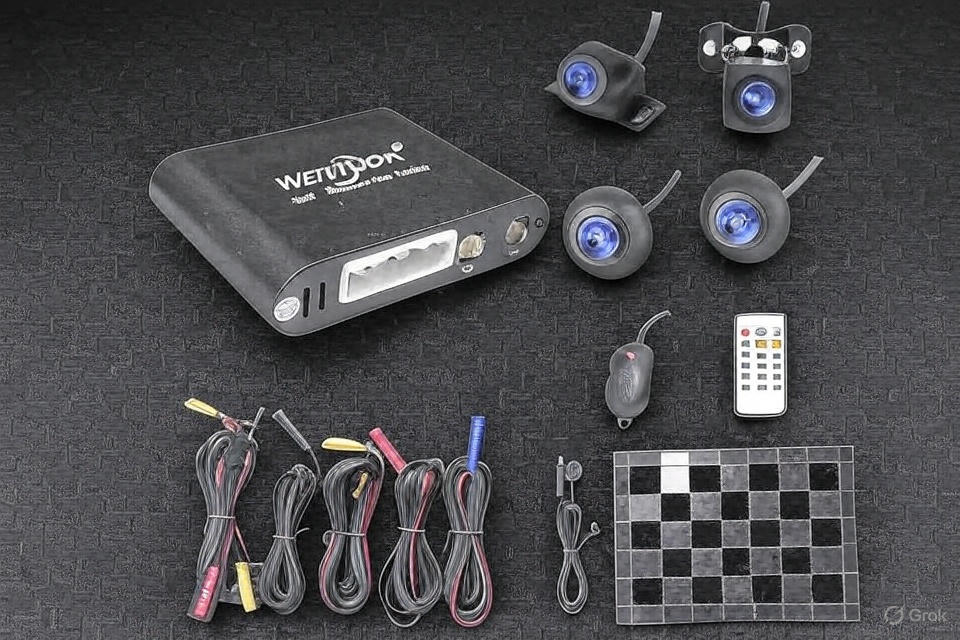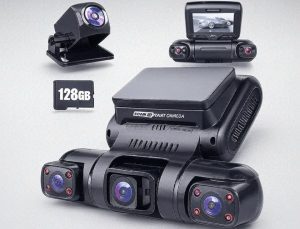Modern driving demands enhanced safety features, and 360-degree bird view cameras have become essential tools for drivers worldwide. These sophisticated systems eliminate blind spots, enhance parking precision, and provide comprehensive vehicle monitoring capabilities. Today’s automotive technology offers various options for drivers seeking complete visibility around their vehicles.
Contents
- How 360 Degree Bird View Cameras Work
- Benefits of Installing 360 Degree Bird View Systems
- Key Features to Look For
- Top 5 Best 360 Degree Bird View Cameras for Cars
- Installation Process and Considerations
- Maintenance and Troubleshooting
- Cost Analysis and Value Proposition
- Technology Trends and Future Developments
- Compatibility with Different Vehicle Types
- User Experience and Interface Design
- Safety Features and Collision Prevention
- Environmental Impact and Sustainability
- Regulatory Compliance and Legal Considerations
- Conclusion
How 360 Degree Bird View Cameras Work
A 360-degree camera for cars provides a complete and real-time view of the surroundings. It is a complete system consisting of four to six cameras installed at different locations. These cameras work together to create a seamless bird’s eye view of your vehicle’s surroundings.
The system combines multiple wide-angle cameras positioned strategically around your car. Each camera captures footage from different angles, and advanced software processes these images into a unified top-down view. This bird’s eye perspective appears on your dashboard display, showing your vehicle as if viewed from above.
Advanced systems incorporate real-time image processing that automatically adjusts brightness, contrast, and color balance. The cameras typically feature waterproof housing and night vision capabilities, ensuring reliable performance in various weather conditions.
Benefits of Installing 360 Degree Bird View Systems
360-degree cameras provide added safety to drivers, especially when parking in tight spaces, eliminating blind spots, and avoiding pedestrians. These systems offer numerous advantages for everyday driving situations.
Safety ranks as the primary benefit of these camera systems. Drivers gain complete visibility around their vehicles, significantly reducing the risk of accidents during parking maneuvers. The bird’s eye view helps identify obstacles, pedestrians, and other vehicles that might otherwise remain hidden in blind spots.
Parking becomes significantly easier with these systems. The overhead view allows precise positioning in tight spaces, reducing the likelihood of bumps, scrapes, and costly repairs. Many systems include dynamic guidelines that show predicted vehicle paths, making parallel parking and reverse parking more intuitive.
By avoiding accidents, drivers can also reduce their insurance costs. Insurance companies often offer discounts to drivers who have installed safety features in their vehicles, making these systems financially beneficial beyond their initial cost.
Key Features to Look For
When evaluating 360-degree bird view cameras, several critical features distinguish superior systems from basic alternatives. Video resolution plays a crucial role in image clarity and detail recognition. Systems offering 1080P or higher resolution provide crisp, detailed images essential for identifying small obstacles and precise parking.
Night vision capabilities ensure consistent performance during low-light conditions. Quality systems incorporate infrared sensors or enhanced low-light processing to maintain clear visibility after dark. This feature proves invaluable for drivers who frequently park in poorly lit areas or drive during evening hours.
Waterproof rating indicates the system’s durability and reliability. Look for cameras with IP67 or IP68 ratings, which guarantee protection against water damage and dust infiltration. These ratings ensure long-term performance regardless of weather conditions.
Installation compatibility affects both initial setup and ongoing functionality. Systems designed for universal installation work with various vehicle types, while others require specific mounting configurations. Consider your vehicle’s design and available mounting locations when evaluating compatibility.
Top 5 Best 360 Degree Bird View Cameras for Cars
1. Universal 360 Degree Bird View System Car DVR Record Panoramic View
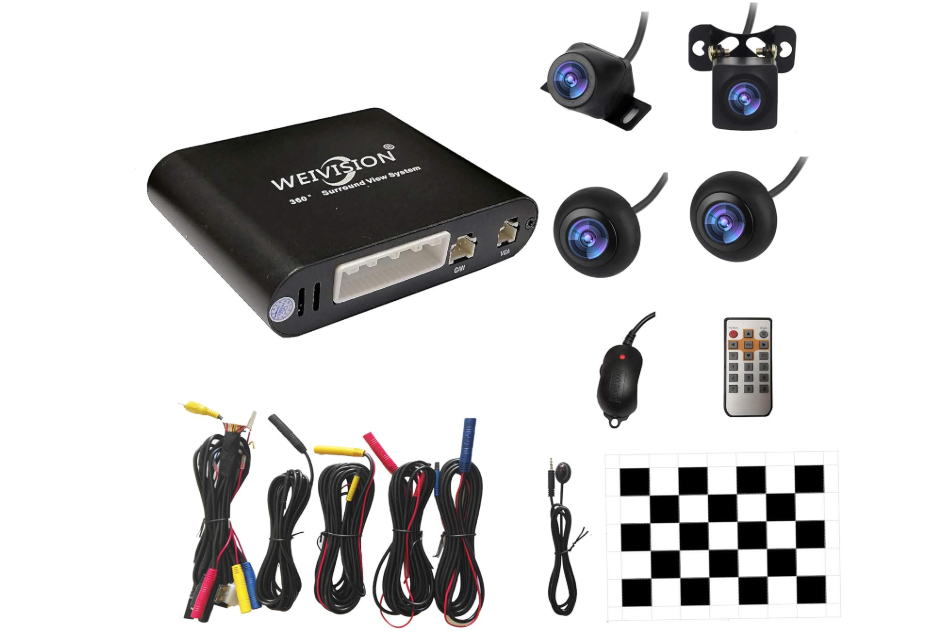
This comprehensive system offers universal compatibility across different vehicle types. The system includes four wide-angle cameras designed for front, rear, left, and right positioning. Installation flexibility makes this option suitable for cars, SUVs, trucks, and commercial vehicles.
The system features panoramic view recording capabilities, allowing drivers to capture footage from all angles simultaneously. This recording function proves valuable for insurance claims, security monitoring, and driver training purposes. The universal mounting system adapts to various vehicle configurations without requiring specialized hardware.
Pros:
- Universal compatibility with most vehicles
- Comprehensive recording capabilities
- Flexible mounting options
- Cost-effective solution
Cons:
- May require professional installation for optimal performance
- Basic night vision compared to premium systems
2. Super HD 1080P Car 360 Degree Bird View Surround System DVR
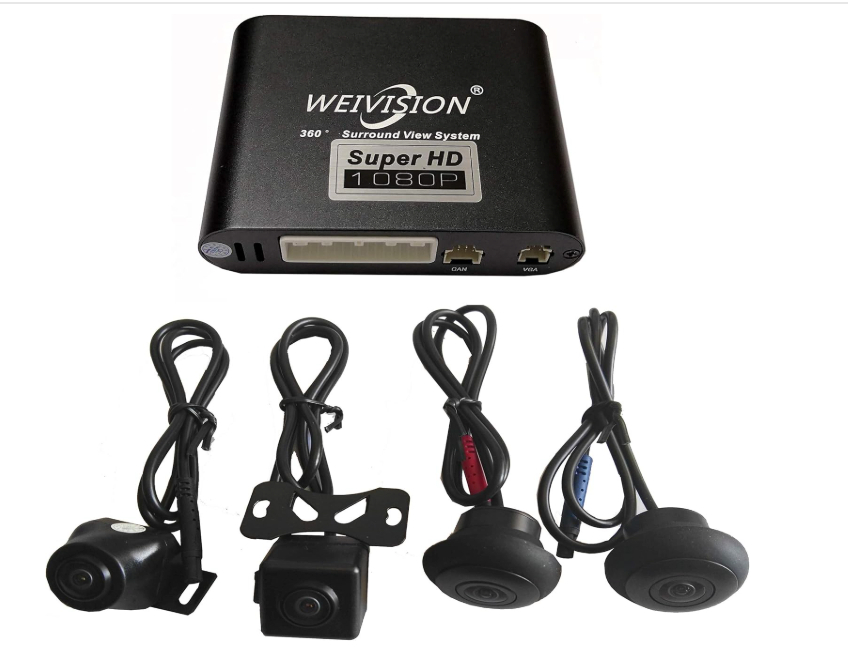
This high-definition system delivers exceptional image quality with 1080P resolution across all cameras. The enhanced sensor technology provides superior performance in various lighting conditions, making it ideal for drivers who demand crystal-clear visibility.
The system incorporates advanced parking monitoring features that automatically activate when the vehicle is in reverse. HD sensors detect obstacles and provide real-time alerts, helping drivers avoid collisions during parking maneuvers. The recording functionality captures high-quality footage for security and insurance purposes.
Pros:
- Superior 1080P image quality
- Advanced parking monitoring features
- High-quality sensors for accurate detection
- Excellent recording capabilities
Cons:
- Higher power consumption than basic systems
- Requires compatible display unit for optimal performance
3. 360 Car Camera with Android Auto Radio Integration
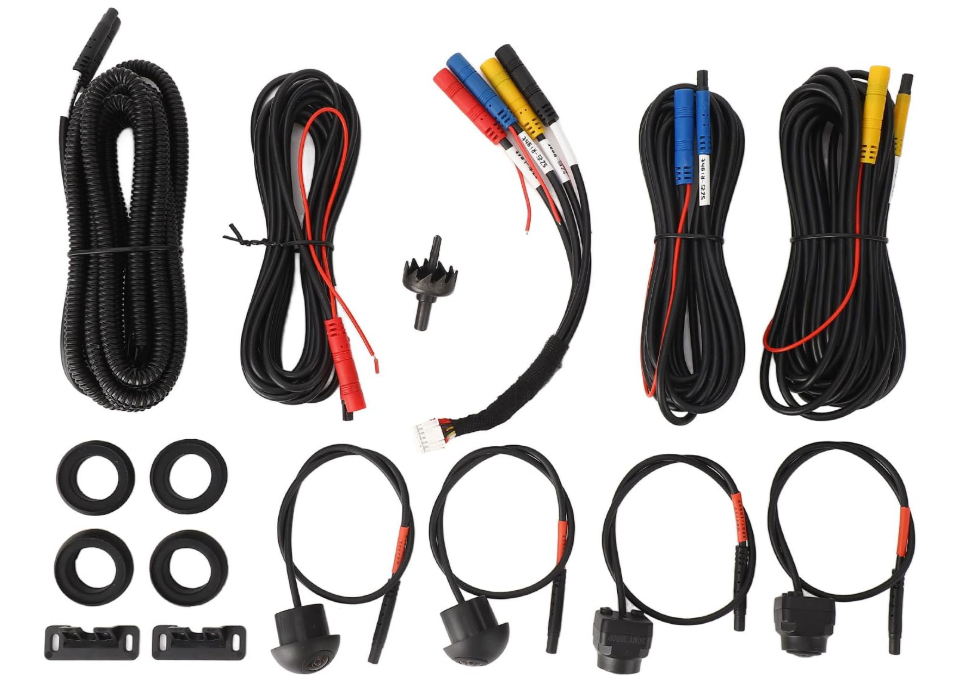
This system stands out for its seamless integration with Android Auto radio systems. The seven-inch display provides clear visibility of the bird’s eye view, while night vision capabilities ensure consistent performance in low-light conditions. The system includes four cameras positioned for complete coverage.
Android Auto integration allows easy access to camera feeds through the vehicle’s infotainment system. The user-friendly interface makes switching between camera views simple and intuitive. Night vision technology incorporates infrared sensors for enhanced visibility after dark.
Pros:
- Seamless Android Auto integration
- Large 7-inch display for clear viewing
- Advanced night vision capabilities
- User-friendly interface
Cons:
- Limited to Android Auto compatible vehicles
- May require software updates for optimal performance
4. 360 Degree Bird View Surround System with 720P Recording
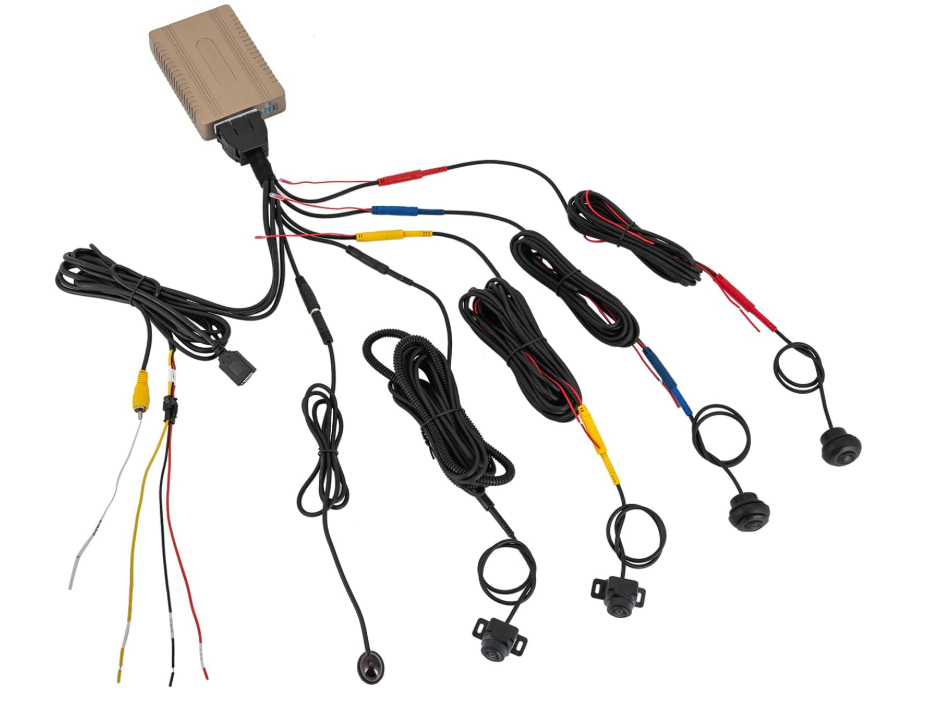
This system offers reliable performance with 720P recording capabilities across all four cameras. The system includes comprehensive parking monitoring features and night vision functionality. The design accommodates various vehicle types, including cars, RVs, trucks, and trailers.
The 720P resolution provides clear image quality sufficient for most driving situations. The system’s versatility makes it suitable for both personal and commercial vehicle applications. Night vision capabilities ensure consistent performance during evening and early morning driving.
Pros:
- Versatile compatibility with multiple vehicle types
- Reliable 720P recording quality
- Comprehensive parking monitoring
- Suitable for commercial applications
Cons:
- Lower resolution compared to 1080P systems
- May struggle in extremely low-light conditions
5. Fockety 360 Degree Bird View System with IP68 Waterproof Rating
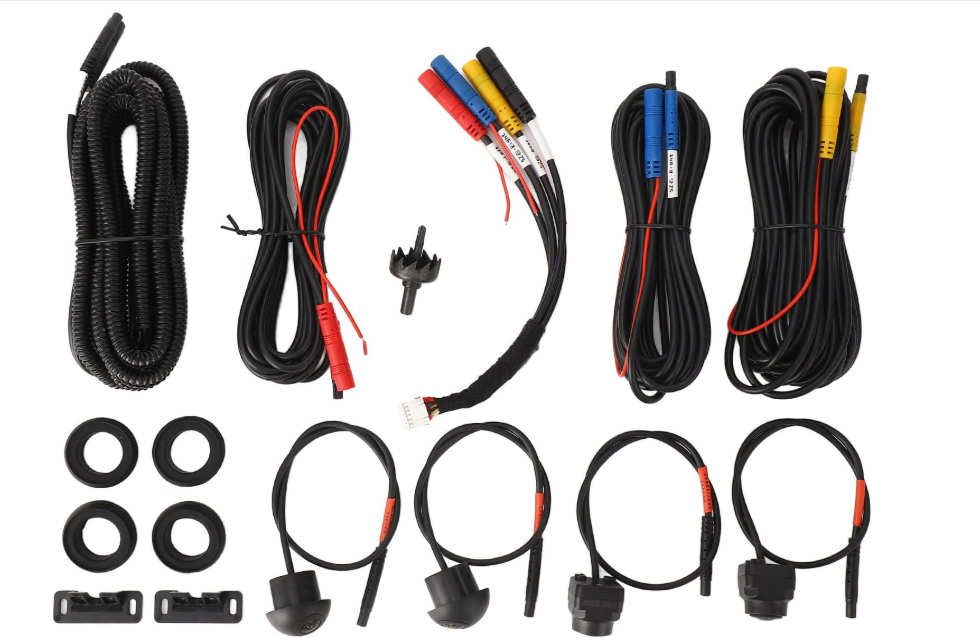
This premium system offers both 720P and 1080P recording options with AHD technology for enhanced image quality. The IP68 waterproof rating ensures durability in harsh weather conditions. Four-way camera configuration provides complete vehicle coverage.
The system’s waterproof design makes it suitable for vehicles frequently exposed to rain, snow, and harsh weather conditions. AHD technology delivers superior image quality compared to standard analog systems. The system includes comprehensive night vision capabilities for consistent performance.
Pros:
- Dual resolution options (720P/1080P)
- Superior IP68 waterproof rating
- Advanced AHD technology
- Excellent durability in harsh conditions
Cons:
- Higher cost than basic systems
- Requires compatible AHD display unit
Installation Process and Considerations
Professional installation ensures optimal performance and proper system integration. The installation process typically involves mounting four cameras at strategic positions around the vehicle, running wiring harnesses, and connecting the control unit to the dashboard display.
This product is easy to install, zero damage to the car. It provides drivers with a full range of visual aids for car blind spots. However, proper installation requires understanding of automotive electrical systems and careful cable routing to avoid interference with existing vehicle systems.
Camera positioning plays a crucial role in system effectiveness. Front cameras mount near the grille or bumper, rear cameras integrate with existing backup camera locations, and side cameras attach to door mirrors or side panels. Each camera requires secure mounting to prevent movement during vehicle operation.
Power supply considerations affect system reliability and performance. Most systems connect to the vehicle’s electrical system through the fuse box or directly to the battery. Proper power management ensures consistent operation without draining the vehicle’s battery.
Maintenance and Troubleshooting
Regular maintenance keeps 360-degree bird view systems operating at peak performance. Camera lens cleaning prevents dirt, water spots, and debris from affecting image quality. Use appropriate cleaning solutions and microfiber cloths to avoid scratching the lens surfaces.
Software updates enhance system performance and add new features. Many systems support firmware updates through USB connections or wireless updates when available. Regular updates ensure compatibility with newer vehicle systems and improved functionality.
Common troubleshooting issues include camera misalignment, poor image quality, and connectivity problems. Camera misalignment typically results from loose mounting hardware or impact damage. Poor image quality may indicate dirty lenses, inadequate lighting, or system calibration issues.
System calibration ensures accurate bird’s eye view representation. Most systems include calibration procedures that align camera angles and create precise overhead views. Regular calibration maintains system accuracy and optimal performance.
Cost Analysis and Value Proposition
360-degree bird view camera systems range from budget-friendly options to premium installations. Basic systems typically cost between $200-$500, while advanced systems with HD recording, night vision, and professional installation may reach $1,000 or more.
Cost considerations include initial purchase price, installation expenses, and ongoing maintenance. Professional installation adds $200-$400 to the total cost but ensures proper system integration and warranty coverage. DIY installation saves money but requires technical knowledge and appropriate tools.
Value proposition analysis reveals significant benefits beyond the initial investment. Accident prevention saves repair costs, insurance claims, and potential legal expenses. Enhanced parking precision reduces the likelihood of minor collisions and property damage.
Insurance benefits provide additional value for some drivers. Some insurance companies offer discounts for vehicles equipped with safety features, potentially offsetting system costs over time. These discounts vary by provider and coverage type.
Technology Trends and Future Developments
Current technology trends focus on artificial intelligence integration, improved image processing, and enhanced connectivity features. AI-powered systems can identify specific objects, predict collision risks, and provide intelligent warnings to drivers.
Some 360-degree camera systems come with advanced features, such as object detection, dynamic guidelines, or AI alerts. These advanced features represent the future direction of automotive safety technology.
Integration with autonomous driving systems represents a significant development area. 360-degree cameras provide essential data for self-driving vehicles, helping them navigate complex environments safely. This integration will likely become standard in future vehicle designs.
Cloud connectivity allows remote monitoring, system updates, and data analysis. Connected systems can provide real-time traffic information, parking availability, and security alerts. These features enhance the overall driving experience and vehicle security.
Compatibility with Different Vehicle Types
Vehicle compatibility varies significantly across different 360-degree camera systems. Compact cars typically require different mounting solutions than large SUVs or commercial trucks. System selection should consider vehicle size, body style, and existing technology integration.
Luxury vehicles often include factory-installed camera systems that may conflict with aftermarket installations. Compatibility checking prevents system conflicts and ensures proper operation. Some aftermarket systems integrate seamlessly with existing vehicle technology.
Commercial vehicles present unique installation challenges due to size, weight, and operating conditions. Heavy-duty systems designed for trucks and commercial applications offer enhanced durability and extended warranty coverage. These systems typically cost more but provide superior longevity.
Electric vehicles require special consideration for power consumption and electrical system compatibility. High-efficiency systems minimize battery drain while providing essential safety features. Installation in electric vehicles may require specialized knowledge of high-voltage systems.
User Experience and Interface Design
User interface design significantly impacts the practical value of 360-degree bird view systems. Intuitive controls allow drivers to quickly access different camera views and adjust settings while driving. Complex interfaces can distract drivers and reduce system effectiveness.
Display quality affects visibility and usability in various lighting conditions. High-resolution displays provide clear images, while anti-glare coatings improve visibility in bright sunlight. Display size should balance visibility with dashboard space constraints.
Response time influences system usability during critical moments. Fast-responding systems provide immediate feedback when drivers need to make quick decisions. Slow response times can reduce system effectiveness and driver confidence.
Customization options allow drivers to adjust camera angles, display preferences, and alert settings. Flexible systems accommodate different driving styles and preferences. Some systems offer multiple user profiles for vehicles with multiple drivers.
Safety Features and Collision Prevention
Installing a 360 camera allows one to monitor the surroundings and get real-time alerts of potential hazards. It is also able to react and avoid accidents, featuring options like proximity sensors to notify if there is any object close.
Advanced safety features distinguish premium systems from basic camera installations. Collision warning systems analyze camera feeds to detect potential hazards and alert drivers before accidents occur. These systems use sophisticated algorithms to identify moving objects and predict collision risks.
Parking assistance features guide drivers through complex parking maneuvers. Dynamic guidelines show predicted vehicle paths, while proximity sensors provide audio and visual warnings when approaching obstacles. These features significantly reduce parking-related accidents.
Blind spot monitoring extends beyond traditional mirror-based systems. 360-degree cameras provide complete visibility around the vehicle, eliminating dangerous blind spots that contribute to accidents. This comprehensive coverage enhances safety during lane changes and merging.
Emergency recording features automatically save footage when the system detects sudden impacts or emergency braking. This documentation proves valuable for insurance claims and accident investigation. Some systems include automatic emergency contact features that alert emergency services.
Environmental Impact and Sustainability
Modern 360-degree camera systems incorporate environmentally conscious design principles. Energy-efficient components reduce power consumption and minimize impact on vehicle fuel economy. LED lighting systems consume less power than traditional illumination methods.
Durable construction reduces electronic waste by extending system lifespan. High-quality materials and weatherproof designs prevent premature failure and replacement needs. Proper installation and maintenance further extend system life and reduce environmental impact.
Recyclable components support sustainable disposal practices when systems reach end-of-life. Many manufacturers offer recycling programs for obsolete equipment. Responsible disposal prevents electronic waste from entering landfills.
Energy recovery systems in some advanced installations capture energy from vehicle movement or solar panels. These systems reduce power consumption and environmental impact while maintaining full functionality.
Regulatory Compliance and Legal Considerations
Automotive safety regulations vary by jurisdiction and may affect 360-degree camera system installation and use. Some regions require specific safety certifications or installation standards. Compliance ensures legal operation and maintains vehicle warranty coverage.
Privacy regulations affect camera system use and data storage. Systems that record continuously may require disclosure to passengers and compliance with local privacy laws. Data protection measures prevent unauthorized access to recorded footage.
Insurance implications vary by provider and coverage type. Some policies require disclosure of aftermarket safety equipment, while others offer premium discounts. Consultation with insurance providers ensures proper coverage and potential savings.
Professional installation standards ensure compliance with automotive safety regulations. Certified installers understand local requirements and proper installation procedures. Professional installation often includes warranty coverage and compliance guarantees.
Conclusion
360-degree bird view cameras represent essential safety technology for modern vehicles. These systems provide comprehensive visibility, enhance parking precision, and significantly reduce accident risks. The five reviewed systems offer various features and price points to accommodate different needs and budgets.
The Universal 360 Degree Bird View System provides excellent value for budget-conscious drivers seeking reliable basic functionality. The Super HD 1080P system offers superior image quality for drivers prioritizing visual clarity. Android Auto integration makes the third system ideal for technology-focused users.
Commercial vehicle operators benefit from the versatile 720P system’s multi-vehicle compatibility. The premium Fockety system delivers exceptional durability and advanced features for demanding applications.
System selection should consider individual needs, vehicle compatibility, and long-term value. Professional installation ensures optimal performance and warranty coverage. Regular maintenance keeps systems operating at peak efficiency.
Investment in 360-degree bird view camera technology pays dividends through enhanced safety, reduced accident risks, and improved driving confidence. These systems represent valuable additions to any vehicle’s safety equipment portfolio. As technology continues advancing, these systems will become increasingly sophisticated and valuable for drivers worldwide.
The future of automotive safety depends on comprehensive visibility and intelligent hazard detection. 360-degree bird view cameras provide the foundation for these advanced safety systems, making them essential investments for safety-conscious drivers seeking the best protection for their vehicles and families.
